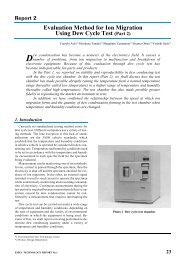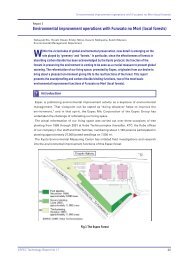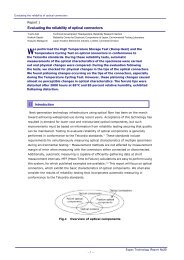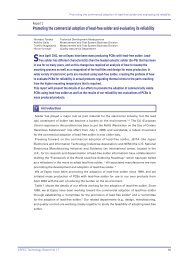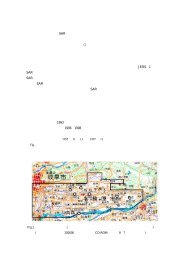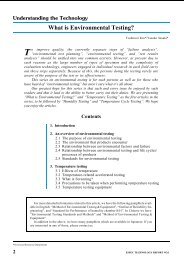Measuring conductivity of proton conductive membranes in the ...
Measuring conductivity of proton conductive membranes in the ...
Measuring conductivity of proton conductive membranes in the ...
You also want an ePaper? Increase the reach of your titles
YUMPU automatically turns print PDFs into web optimized ePapers that Google loves.
<strong>Measur<strong>in</strong>g</strong> <strong>conductivity</strong> <strong>of</strong> <strong>proton</strong> <strong>conductive</strong> <strong>membranes</strong> <strong>in</strong> <strong>the</strong> direction <strong>of</strong> thickness<br />
However, it is highly likely that treatments <strong>the</strong> membrane undergoes <strong>in</strong> <strong>the</strong><br />
manufactur<strong>in</strong>g and process<strong>in</strong>g processes, such as stretch<strong>in</strong>g and hot-press, will change<br />
not only its crystall<strong>in</strong>e structure and dimensional stability <strong>in</strong> <strong>the</strong> longitud<strong>in</strong>al, transverse,<br />
and thickness directions but also exert some <strong>in</strong>fluence on its <strong>proton</strong> <strong>conductivity</strong>. There<br />
is a high probability <strong>of</strong> anisotropy3) <strong>in</strong> <strong>the</strong> <strong>proton</strong> <strong>conductivity</strong> <strong>of</strong> <strong>the</strong> membrane. On <strong>the</strong><br />
o<strong>the</strong>r hand, PFSA <strong>membranes</strong> are be<strong>in</strong>g used <strong>in</strong> <strong>the</strong> direction <strong>of</strong> thickness for <strong>the</strong> solid<br />
polymer electrolyte fuel cells, and an anisotropically <strong>conductive</strong> membrane that was<br />
newly-developed must also be evaluated <strong>in</strong> various directions. Therefore, a reliable<br />
measur<strong>in</strong>g technique with high stability, reproducibility and accuracy is required to<br />
evaluate <strong>proton</strong> <strong>conductivity</strong> <strong>in</strong> <strong>the</strong> direction <strong>of</strong> thickness <strong>of</strong> <strong>the</strong> membrane. The research<br />
for this report focuses on develop<strong>in</strong>g a stable and precise method <strong>of</strong> measur<strong>in</strong>g<br />
<strong>conductivity</strong> <strong>in</strong> <strong>the</strong> direction <strong>of</strong> thickness for <strong>the</strong> <strong>proton</strong>-<strong>conductive</strong> polymer electrolyte<br />
membrane. 4)<br />
Measurements <strong>in</strong> <strong>the</strong> direction <strong>of</strong> thickness can be conducted with 2-probe *4 and<br />
4-probe methods, but measur<strong>in</strong>g with two probes is much easier than with four, and<br />
results are more stable as <strong>the</strong>re are fewer <strong>in</strong>consistencies with multiple specimens. This<br />
report presents <strong>the</strong> results obta<strong>in</strong>ed us<strong>in</strong>g <strong>the</strong> 2-probe method for <strong>conductivity</strong><br />
measurements <strong>of</strong> ion exchange <strong>membranes</strong>.<br />
2<br />
Experimental method<br />
2-1 Equipment and materials<br />
Table 1 lists <strong>the</strong> equipment and materials used <strong>in</strong> this research.<br />
Table 1 Equipment and materials<br />
Equipment/materials Manufacturer<br />
Impedance ga<strong>in</strong>/phase<br />
analyzer<br />
- 13 -<br />
Model/registered<br />
product name<br />
Solartron Instruments SI 1260<br />
Electrochemical <strong>in</strong>terface Solartron Instruments SI 1287<br />
Temperature & humidity<br />
chamber<br />
Ion exchange membrane<br />
ESPEC Corporation PL-1KPH<br />
E. I. du Pont de Nemours<br />
and Company<br />
Nafion ® 117<br />
Espec Technology Report No20



